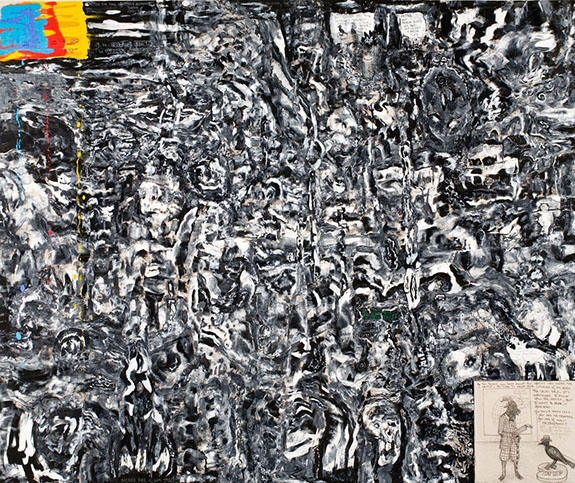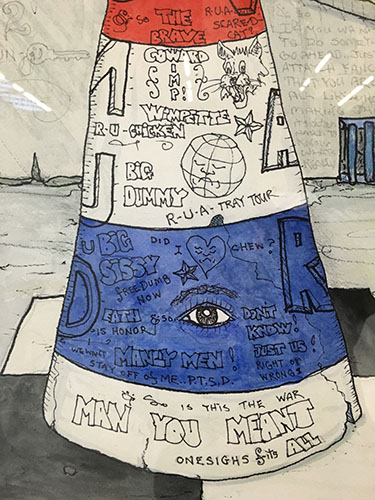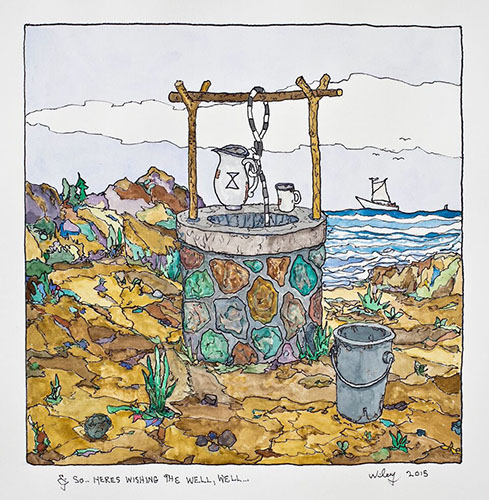 |
 |
May Cuss Grate Again?, his second exhibition at the gallery, affirms these attributes, but it also shows Wiley tilting the emphasis toward images and away from words. It’s not that the artist isn’t obsessively recording his thoughts and doubts about mankind (he is); or that his alter egos, Goat and Raven, aren’t arguing cantankerously about art (they are); or that he’s stopped flinging barbs at climate deniers, dictators, corporate criminals, polluters, warmongers and human rights abusers (he hasn’t); it’s that those barbs, while occasionally sharp, and sometimes brilliantly so, no longer seem as pointed as they once were. What hasn’t changed is Wiley’s basic iconography. His ink-and-watercolor drawings, 15 of which are on view, retain all of the elements Wiley watchers have come to know well: cartoon-y faces, omnipresent eyes that speak of surveillance, winged hourglasses that speak of mortality, targets, musical symbols, hand tools and the always-present dunce cap, Wiley’s avatar for himself: a genius masquerading as a an aw-shucks country bumpkin. From drawings like these, which come larded with homespun koans, aphorisms, puns, neologisms and spoonerisms, it’s easy to see how the Dude Ranch Dada appellation arose and why it stuck.
 |
Two monumental canvases at the gallery’s entryway reveal a similar allover approach. In these the lines are markedly looser than in the drawings, but the feel is the same: of being adrift in a convoluted, unnavigable topography. Three other large-scale paintings — & So….Abstracting the Raven and the Crow; Facing Corvus Constellation; and Goat & Raven Chewin’ the Corner in Whack and Blight — make the drift of Wiley’s thinking (influenced, as always, by NPR News) clearer. In these, the most striking features are ghoulish faces and angry, roiling waves, rendered in black and white. Wiley applies the acrylic paint with a palette knife, but the texture is sooty, as if the canvases had been exposed to a smokestack and rolled in snow. In certain areas, the paint appears to have been delicately and selectively
squeegeed, creating melted, moiré-like patterns. To call these works dark and turbulent would be a vast understatement; they read as molten graveyards of grimacing monsters, reminiscent of those seen in Goya, Bosch, Blake, Munch and Picasso’s Guernica. I hesitate to invoke the A-word, but here there’s little choice: these are grisly, apocalyptic visions.